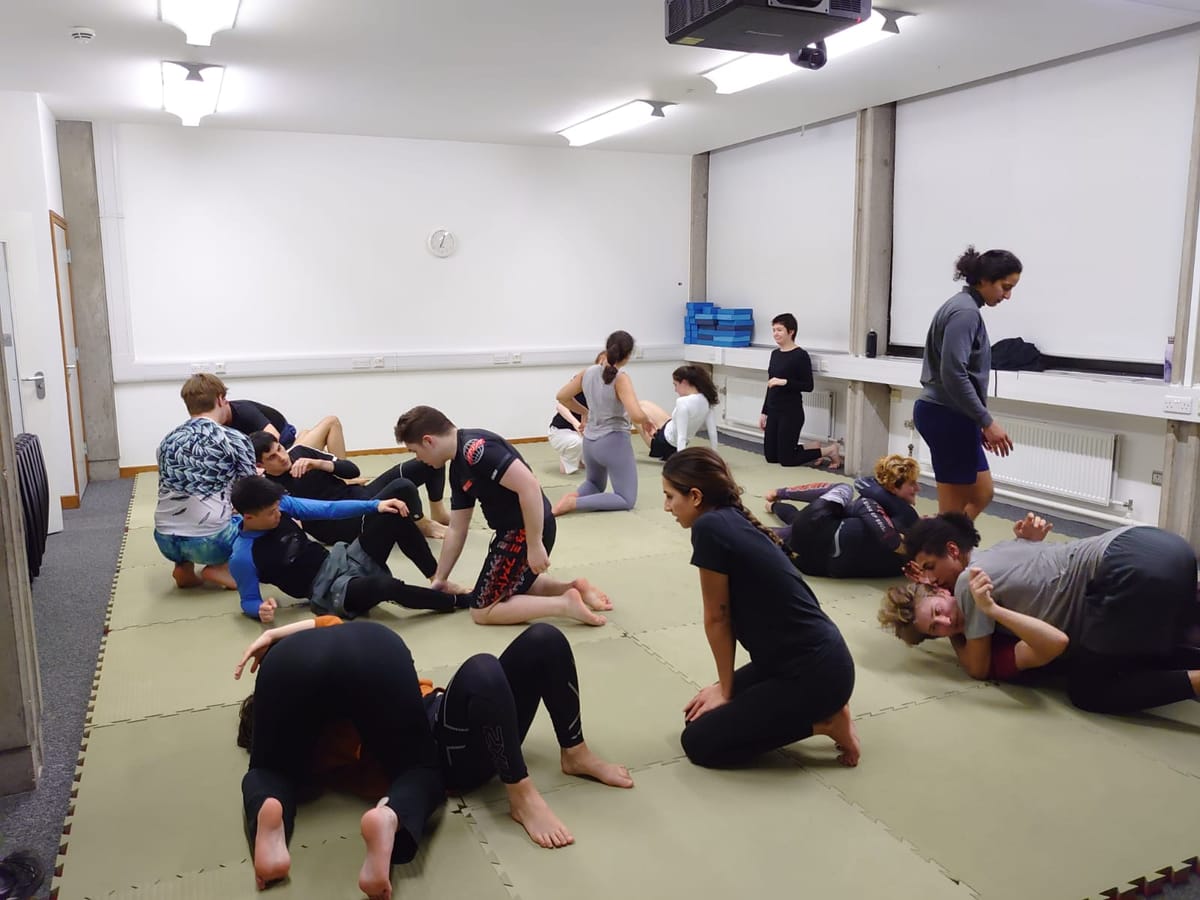A Brief History of SOAS Martial Arts

By Casey Trowbridge, BA History and Politics
Luckily, SOAS Martial Arts has a well-defined beginning. In 1985, the first martial art to take place on campus was Nippon Kempo, brought to SOAS, and the UK, by a student called Luther De Gale, who had learnt the discipline after spending a year in Japan. It was first agreed upon that a modest-sized room, found between the boiler rooms in the basement of SOAS, was to be converted into a dojo. The dojo, a fairly humble place in a relatively obscure part of campus, started with just one martial art club at the time but quite quickly grew quite the roster of martial arts, all operating out of the gym based in SOAS.
Airenjuku Aikido began just four years later and continues to this day, being, to our knowledge, the longest-lasting martial art at SOAS. The martial arts club, of which I am president, Brazilian Jiu-Jitsu, began at SOAS in 2011 and quickly became one of our, if not the largest martial art at SOAS in terms of membership. We began to grow a wide roster of martial arts, from striking and weapons training, such as boxing and Kali, to grappling martial arts, such as Brazilian Jiu-Jitsu.
The basement closed in 2019, locked up by SOAS and enforced by security. On to why it was closed and remains so; many rumours surround this. According to the security staff on campus, it has been ‘temporarily closed due to an intermittent electrical fault,’ which is likely referring to the air conditioning unit that broke down due to disrepair. However, no official statement has been made by SOAS on its closure. It is now coming up to the fourth year of SOAS not having a dedicated training space for sports and martial arts
‘Whilst SOAS has been reluctant to continue accommodating us, the Students’ Union has been particularly helpful in helping us secure alternative spaces for us to continue our long history of teaching and training on the SOAS campus.’
Between the closure of our main training space, locked with much of our equipment and mats still inside left to collect dust, and the COVID-19 pandemic that halted all training, with many graduating and moving on, the basement gym that was bustling with life before the turn of the decade is now only remembered by the martial arts societies themselves. The combination of the closure of the gym and the pandemic meant that some of the smaller martial arts societies were forced to close, with our roster reducing from a dozen different societies to five.
Down But Not Out
SOAS Martial Arts are slowly rebuilding again with the establishment of L67 and L62 as our new training spaces, with members slowly joining and building traction again. Fahed Rahman, Brazilian Jiu-Jitsu purple belt and SOAS BJJ instructor, says: ‘We’re ecstatic that we have so many people on the mats at the moment. It’s especially exciting that so many of the new people in the club are women.’ Furthermore, Rahman adds, ‘It’s lovely to see people nervous about martial arts growing in confidence and being able to grapple with complete strangers.’
Other SOAS martial arts are also reporting a marked increase in the number of people joining in on their classes. Other societies are continuing to be cultivated, with the expected return of the Capoeira society. Whilst SOAS has been reluctant to continue accommodating us, the Students’ Union has been particularly helpful in helping secure alternative spaces for us to continue our long history of teaching and training on the campus.
Photo caption: Brazilian Jiu Jitsu drills in L67 (Credit: Fahed Rahman)



